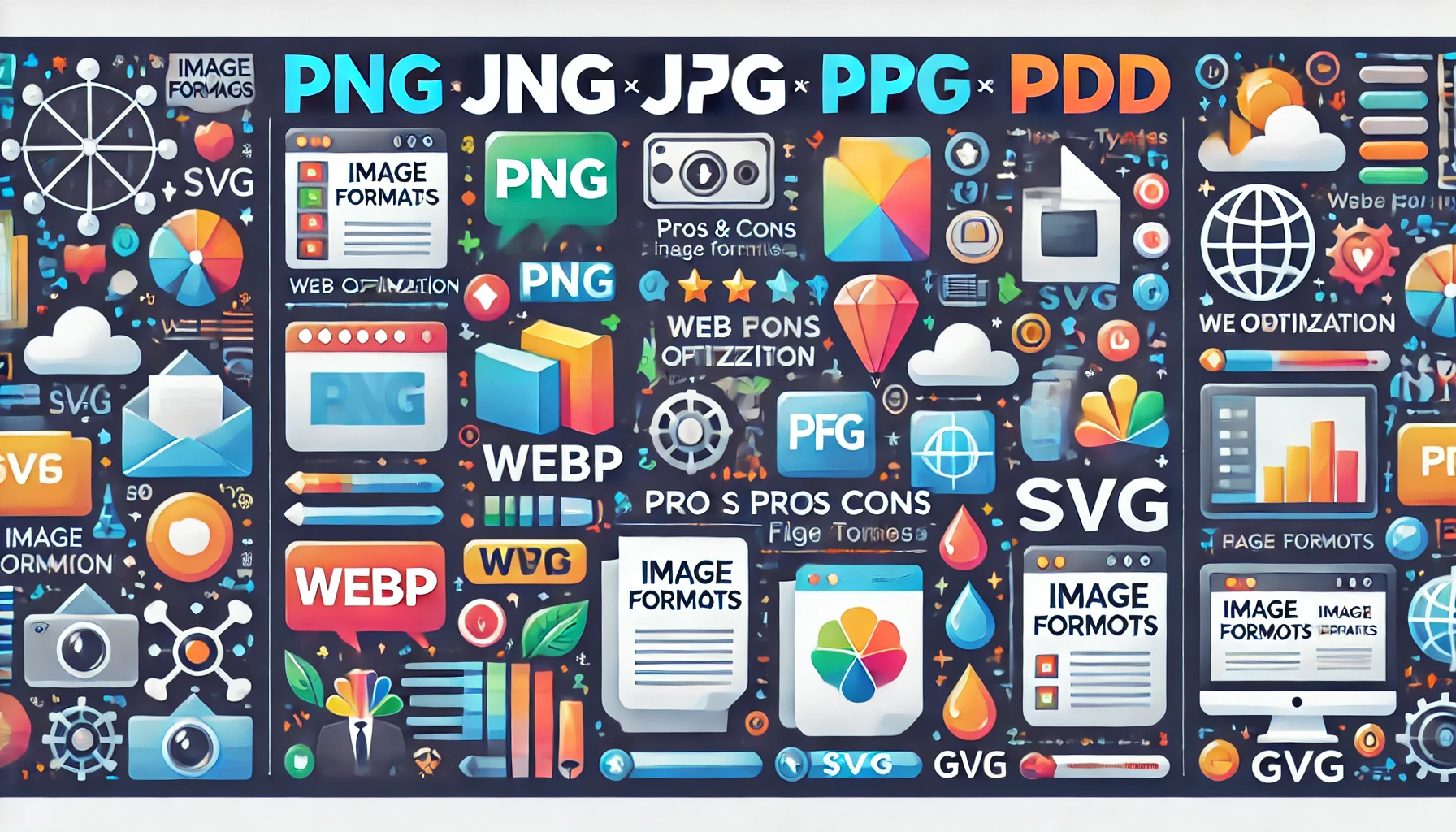The Ultimate Guide to Image Conversion What You Need to Know
Dictationer
•
In today’s digital landscape, images play a pivotal role in communication, marketing, and user engagement. Whether you're a designer, marketer, or casual user, understanding how to convert images between different formats is essential for optimizing quality, file size, and compatibility. In this ultimate guide, we’ll explore the ins and outs of image conversion, the best tools to use, and how to choose the right format for your needs.
Why Image Conversion is Important
Image conversion is the process of transforming one file format into another. This is crucial for:
1. Web Optimization
Different image formats affect page load speed and SEO. Converting images to WebP, for example, can significantly reduce file size while maintaining quality, improving your website's performance.
2. Cross-Platform Compatibility
Certain file formats work better on specific devices or software. Converting images ensures compatibility across different platforms and devices.
3. Quality & Resolution Control
Image conversion allows you to adjust quality and resolution, making it easier to balance file size and visual clarity.
4. Professional Presentation
Whether it's for a presentation, social media post, or blog, choosing the right image format enhances the overall look and feel of your content.
Understanding Different Image Formats
To effectively convert images, it’s crucial to understand the most commonly used formats:
1. JPEG/JPG
- Best For: Photographs and web images
- Pros: High compression with adjustable quality
- Cons: Lossy compression may reduce image quality
2. PNG
- Best For: Graphics with transparency (e.g., logos)
- Pros: Lossless compression, supports transparency
- Cons: Larger file sizes compared to JPEG
3. WebP
- Best For: Web optimization
- Pros: Superior compression and quality compared to JPEG and PNG
- Cons: Limited support on older browsers
4. GIF
- Best For: Animations
- Pros: Supports animations and transparency
- Cons: Limited to 256 colors, resulting in lower quality
5. SVG
- Best For: Scalable graphics (e.g., icons, logos)
- Pros: Vector-based, scalable without losing quality
- Cons: Not suitable for detailed photographs
6. PDF
- Best For: Document sharing and printing
- Pros: Preserves layout and design across devices
- Cons: Not ideal for editing images
How to Convert Images Using Dictationer
Dictationer offers a seamless and high-quality solution for converting images between multiple formats. Here’s how to use it:
Step 1: Upload Your Image
Visit the Image Converter on Dictationer. Drag and drop your image or select it from your device.
Step 2: Choose the Output Format
Select the desired output format (e.g., PNG, JPG, WebP, PDF, SVG, GIF, etc.). Dictationer supports a wide range of formats, ensuring compatibility for different use cases.
Step 3: Adjust Settings (Optional)
You can adjust the image quality, resolution, and other settings for optimal output.
Step 4: Click ‘Convert’ and Wait for Processing
Hit the ‘Convert’ button, and Dictationer will process the image in seconds.
Step 5: Download Your Converted Image
Once the conversion is complete, download the image to your device.
Best Practices for Image Conversion
To ensure the best results when converting images, follow these best practices:
1. Choose the Right Format for Your Needs
- JPEG: For photos and web images with smaller file sizes.
- PNG: For transparent backgrounds and high-quality graphics.
- WebP: For web optimization with high compression.
- PDF: For documents and printing purposes.
- SVG: For logos and icons that require scaling.
2. Maintain Image Quality
Always use high-resolution source images to maintain quality after conversion.
3. Optimize for Web Performance
Compress images for faster loading times without sacrificing quality. WebP is ideal for this.
4. Batch Conversion for Efficiency
Convert multiple images at once for efficient workflow management. Dictationer’s batch conversion feature is perfect for this.
5. Keep Original Files
Maintain a backup of the original image files for future edits and conversions.
Why Use Dictationer for Image Conversion?
Dictationer is a powerful online tool designed to make image conversion fast, secure, and efficient. Here’s why it’s the best choice:
- Supports Multiple Formats: Convert images to and from PNG, JPG, WebP, PDF, SVG, GIF, and more.
- High-Quality Output: Maintains image clarity and resolution during conversion.
- Secure & Private: Files are automatically deleted after conversion, ensuring privacy.
- Free & Fast: No hidden fees, no downloads required.
- Multi-Platform Compatibility: Works seamlessly on all devices, including Windows, macOS, iOS, and Android.
Common Use Cases for Image Conversion
- Web Designers: Optimize images for faster page loads and SEO.
- Marketers: Convert images for social media posts and ad creatives.
- Business Professionals: Create polished documents and presentations.
- Students & Educators: Convert images for educational materials.
- Photographers & Artists: Maintain high resolution for portfolios and galleries.
Frequently Asked Questions (FAQs)
1. Is Dictationer’s Image Converter free to use?
Yes, Dictationer’s Image Converter is completely free with no hidden costs.
2. Can I convert multiple images at once?
Absolutely! The batch conversion feature allows you to convert multiple images simultaneously.
3. Does it support high-resolution images?
Yes, Dictationer maintains the original resolution and quality of your images.
4. Is my data secure?
Yes, your files are automatically deleted from the server after conversion.
5. Do I need to create an account?
No, you can use the tool without any sign-up or registration.
6. Does it work on mobile devices?
Yes, Dictationer is compatible with all devices, including smartphones and tablets.
Conclusion
Mastering image conversion is essential for efficient digital media management. Whether you need high-quality images for your website, social media, presentations, or documents, the right format can make all the difference. With Dictationer, you have a powerful, fast, and secure tool at your fingertips to handle all your image conversion needs.
Ready to optimize your images? Start Converting Images Now with Dictationer and enhance your digital workflow!
Share and Earn Credits!
Share this link and earn credits when others visit or register.
Share anywhere you like - SNS, messaging apps, or any platform of your choice!
Learn more about Free Credit